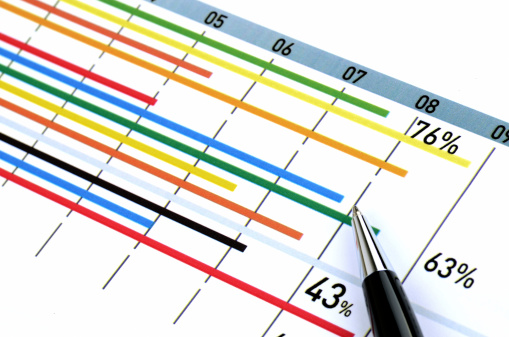For the web/mobile version of this checklist, click here.
This checklist is designed for public health practitioners who do HIV/STBBI-related outreach work with priority populations. Created by the National Collaborating Centre for Infectious Diseases, the checklist works best as a companion to the NCCID Outreach Planning Guide. The Guide can assist with the design of brand new outreach programs or support the further development of ongoing ones.
The four parts of this checklist mirror the four stages of the outreach planning process: research, design, delivery and measurement. The hope is that this document will help program staff stay on track as they make their way through the process.

STEP 1: PROFILE
Get to know your population: Who are the people you serve?
1A. The priority populations we serve include (check all that apply):
[ ] Aboriginal people
[ ] African, Caribbean & Black (ACB) men
[ ] gay men
[ ] immigrants
[ ] incarcerated persons
[ ] injection drug users
[ ] LGBTQ2
[ ] men who have sex with men (MSMs)
[ ] migrant workers
[ ] new arrivals
[ ] non-injection drug users
[ ] people living with HIV/AIDS
[ ] persons with concurrent diagnoses (e.g., co-infected with HCV/HIV)
[ ] refugees
[ ] sex trade clients
[ ] sex trade workers
[ ] sexually exploited persons
[ ] women
[ ] youth
1B. We have pulled together socio-demographic data about our priority population(s) related to:
[ ] age
[ ] education
[ ] ethnicity
[ ] sex
[ ] income
[ ] sexual identity
1C. We have pulled together high-risk and protective behavioural data about our priority population(s) related to:
high-risk sex
[ ] unprotected sex
[ ] number of sexual partners
[ ] types of sexual partners (HIV-positive, IDUs, anonymous/casual, serosorting)
[ ] forced/coerced sex
[ ] transactional sex (aka survival or exchange sex)
drug and substance use
[ ] sharing of injection/inhalation equipment
[ ] heavy or binge drinking testing and treatment
[ ] history of HIV infection
[ ] history of STBBIs
[ ] hepatitis vaccination
[ ] adherence to prescribed drugs for STBBIs
[ ] contact with criminal justice system
[ ] history of incarceration
[ ] known gang membership/affiliation
[ ] recently arrested
[ ] mobility and migration patterns
[ ] recent relocation
[ ] frequent relocation
1D. We have pulled together health status information (including mental health) about the populations we serve.
[ ]
1E. We have looked at these potential sources of information about our priority populations for our area:
[ ] census data
[ ] community profiles
[ ] reports on provincial health administration data
[ ] M-Track Survey (federal)
[ ] I-Track Survey (federal)
[ ] E-SYS (federal)
1F. We have considered these social determinants of health to make sure our outreach is sensitive to the local context (check all that apply):
[ ] education and literacy
[ ] health services access (local clinics; open 24 hours; mobile)
[ ] housing
[ ] income
[ ] social exclusion, isolation or stigma
[ ] social support networks
[ ] stability of employment
1G. We’ve sought perspectives on local services from key community stakeholders, including representatives of our priority populations. This allows us to know:
[ ] what these services are
[ ] how these services may duplicate or compete with one another
[ ] the community’s willingness to use them
[ ] how these services treat their clientele
[ ] how complete and useful these services are
1H. We also know about other strengths and opportunities in the community.
[ ]
1I. We have worked to identify our own organization’s:
[ ] strengths and opportunities
[ ] problems, needs and barriers
[ ] gaps in programs and services
STEP 2: DESIGN
What are the necessary components of the program?
2A. We have community people involved in all stages of our program design.
[ ]
2B. In designing our program, we have considered the trade-offs and/or balance between:
[ ] harm reduction ⇔ health promotion
[ ] individual needs ⇔ community issues
[ ] personal risks ⇔ group vulnerabilities
[ ] stand-alone interventions⇔ integrated programs
[ ] public service settings ⇔private service settings
[ ] paid staff ⇔volunteers
[ ] professional ⇔peer
[ ] population-focus ⇔disease-focus
2C. We have spelled out our program’s goals and objectives in clear language.
[ ]
2D. We have designed indicators for our program objectives as follows:
[ ] each objective has its own specific indicator(s) to monitor and measure our progress
[ ] every indicator is based on measurements taken at regular intervals
(e.g., once a month, once a year)
[ ] every indicator has someone responsible for collecting and comparing the results
2E. Our program’s plan for evaluation has thought about and set up:
[ ] a budgeted set of dedicated resources
[ ] support/training to build evaluation capacity of paid and volunteer staff
[ ] evaluation guidelines and data collection tools (e.g., report forms)
[ ] opportunities to share best practices
2F. Our model of how the program will work over time includes details of its various phases or stages:
[ ] our inputs (available resources)
[ ] our activities
[ ] our outputs (services or products)
[ ] the outcomes (results/impacts of outputs)
[ ] scheduled review of all of the above
2G. We’ve identified specific organizations as potential partners, and ways we could integrate our work.
[ ]
2H. We’ve put in place a set of ethical principles for the day-to-day delivery of outreach.
[ ]
2I. Our outreach staff have been trained to understand the legal context of their work, including:
[ ] the ways local, provincial and federal laws apply to their work
[ ] the ways such laws and our program’s ethics may conflict (and, if so, what to do)
[ ] the powers and discretion of local authorities (police, health and social services)
2J. Our working relationship with local police, health and social services/agencies features:
[ ] clear lines of communication
[ ] endorsement of our outreach program by service/agency executives
[ ] respect for and understanding of each others’ roles
2K. In cases where clientele may not trust other services/agencies, we’ve clearly communicated:
[ ] how we work together with these services/agencies
[ ] what (if any) information we share with these services/agencies
2L. We’ve put a plan in place to manage potential sources of risk, with detailed steps for:
[ ] identifying sources of risk
[ ] keeping risk to a minimum
[ ] where risk becomes reality, limiting any potential damage
[ ] taking corrective action
2M. Each step of this risk management plan has considered the needs of:
[ ] staff
[ ] clients
[ ] partner agencies
[ ] funders
[ ] community as a whole
2N. We have general policies, procedures and guidelines in place for the following areas:
[ ] clientele intake
[ ] code of conduct
[ ] confidentiality
[ ] cultural competence/sensitivity
[ ] data security
[ ] referrals
[ ] safety of staff and clients
[ ] volunteer rights
2O. Our program has anticipated human resource needs in terms of:
[ ] use of peer workers and/or volunteers
[ ] qualifications / competencies
[ ] job descriptions
[ ] training
[ ] supervision
[ ] retention planning
[ ] opportunities for growth
[ ] positive work environment
[ ] performance monitoring/evaluation/feedback
[ ] preventing burn-out
[ ] de-briefing
STEP 3: DELIVER
How will you implement your design?
3A. Outreach staff and managers understand where their tasks fit within a clear and well thought-out administrative structure.
[ ]
3B. Other staff within our organization understand where the outreach program fits within the overall administrative structure.
[ ]
3C. We have followed up with those agencies we identified as potential outreach partners in Step 2.
[ ]
3D. We’ve examined ways to improve inter-agency referrals.
[ ]
3E. Community members are involved in the delivery of our program in the following ways:
[ ] participation in ongoing planning and review
[ ] seats on advisory bodies
[ ] data gathering
[ ] client recruitment
[ ] marketing our program to their networks
[ ] delivery of services, as appropriate (e.g., peer outreach)
3F. The intended benefits for community members involved in program delivery include:
[ ] information sharing
[ ] shared decision-making power
[ ] expansion of their social networks
[ ] a safe place for them to talk about community changes/needs
3G. We build support and awareness for our program by:
[ ] explaining its role in advancing public health
[ ] planning for its sustainability/growth
3H. Our advocacy strategy mobilizes the information and resources needed to effect change across the following systems:
[ ] political
[ ] legal
[ ] social
[ ] economic
3I. We have assessed the potential risks and restrictions that might result from such advocacy.
[ ]

STEP 4: MEASURE
What will you evaluate, and how will you do it?
4A. We have made sure that members of our priority populations have input into how we measure success.
[ ]
4B. Our program indicators tell us whether…
[ ] our program actually reaches the people we want to reach
[ ] our program’s structure is the best way to meet their needs
[ ] the people we serve are becoming healthier
[ ] their behaviours and/or situations are changing
[ ] our inter-agency referral system meets clients’ needs
[ ] our key community members play a meaningful part in program delivery
[ ] our key community members benefit from their participation
4C. We have a plan in place to share our program’s results with:
[ ] priority populations
[ ] service/agency partners
[ ] funders
[ ] community at large

